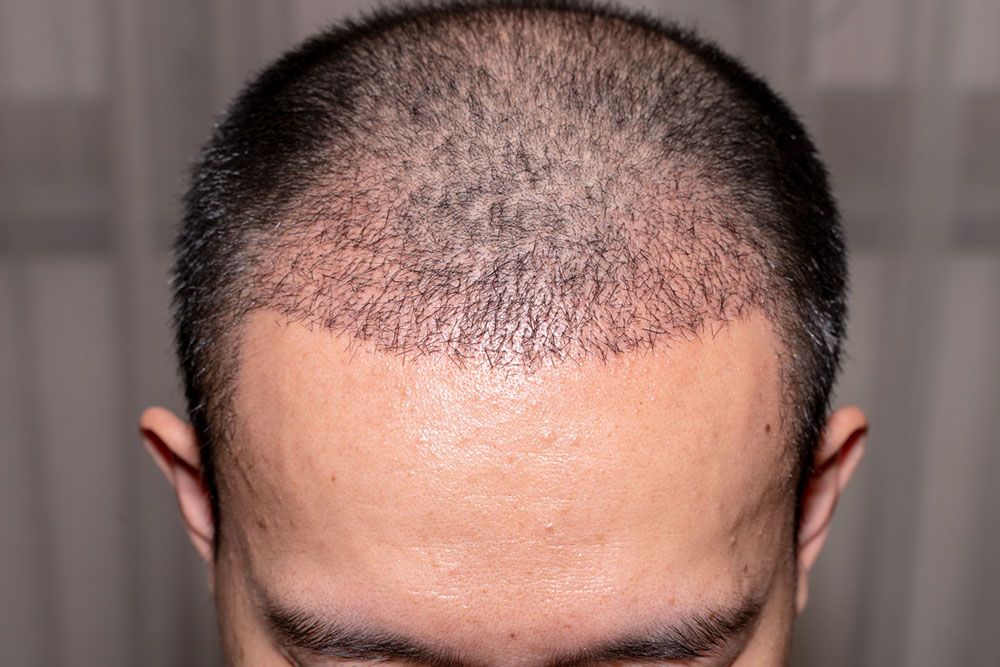Hair Transplant – Types, Benefits, and Tips to Choose a Doctor
A receding hairline is a cause of concern for many, particularly for men. As per estimates, 85% of men are likely to experience hair loss in their lifetime, compared to 55% of women. Also, hair loss can be more visible among men, causing changes in their appearance. Fortunately, a hair transplant can tackle the problem.

Types of hair transplants
Hair transplant procedures are generally bifurcated as follicular unit extraction (FUE) and follicular unit transplantation (FUT).
1. Follicular unit extraction (FUE)
Here, individual follicular units are randomly harvested from the donor area of a person’s scalp. These units are then transplanted in the affected area by creating microscopic circular incisions. Doctors may perform an FUE manually or using a robotic hair transplant device. With FUE transplants, the graft quality is incredibly high, scarring is minimal in the donor area, and recovery is quick. The average cost of 2,000 grafts is €3,000.
2. Follicular unit transplantation (FUT)
In this procedure , a long strip of tissue is extracted from the back of the scalp, leaving behind a single, linear scar. Follicular units are then taken out from this tissue strip in small groups of one to four using stereo-microscopic dissection. FUT facilitates a fuller and more natural look, and the scar is concealed almost completely. That said, scarring and itching may be potential side effects. The procedure is a bit cheaper than FUE, with an approximate cost of €2,400.
Benefits of hair transplants
Regardless of the technique one chooses, hair transplantation has several benefits.
1. Permanent solution to a receding hairline
Wearing a wig or hair extension is only a temporary solution to hair loss. In contrast, hair transplantation permanently fixes the issue. It is also a better alternative to topical treatments prescribed by doctors as they do not always yield good outcomes.
2. Low-maintenance option
Another advantage of hair transplant is that it doesn’t require the level of maintenance that natural hair does. Since there is no chance of balding once the procedure is completed, one doesn’t have to use treated shampoos and conditioners or follow other treatment courses for healthy, dense hair.
3. Natural-looking hair
Unlike wigs and hair extensions, which often appear artificial, hair transplantation facilitates natural-looking hair, just as a person’s hair used to look before they experienced hair loss. That’s another reason why most people opt for the procedure.
4. A marked increase in hair volume
Hair transplantation isn’t just about covering bald patches. It also facilitates a noticeable increase in a person’s overall hair volume, making it appear dense and healthy.
Tips to choose a hair transplant doctor
While a hair transplant isn’t a major procedure, proper care is required to prevent infections and scabbing and minimize discomfort. Choosing the right hair transplant doctor can make the process highly convenient.
1. Check the doctor’s qualifications and experience
A hair transplant doctor should have a postgraduate degree in plastic surgery or dermatology, with specialized training and experience in hair transplantation and restoration. Checking a doctor’s credentials before undergoing a hair transplant procedure is important.
2. Schedule an initial consultation
When looking for hair transplant doctors, it’s important not to rush the decision . Speaking with the expert at length regarding the procedure, the type of hair transplant (FUT or FUE) to opt for, its cost, potential side effects, and other factors can help one gauge their expertise and prepare better for the transplant. These details should be discussed during an initial consultation.
3. Compare the cost of different hair transplant clinics
The charges for a hair transplant procedure may vary marginally between professionals or clinics. So, it helps to check out the hair transplant costs at different clinics and opt for the one in which the professional has considerable expertise and charges a reasonable amount. Comparing prices also helps understand the average rates and avoid overpaying.
4. Check online reviews and feedback
These days, several apps let patients post detailed feedback on doctors and review their services. It’s important to check out these online reviews to verify the doctor’s proficiency and expertise. It also helps to consult others who have undergone similar procedures and ask them for doctor recommendations.
5. Check the clinic’s infrastructure and facilities
The clinic where the procedure will be performed should have the latest hair transplant equipment, resources, and infrastructure. Clinics with modern facilities generally provide a better outcome.
Getting a hair transplant is a great idea to ensure natural-looking, dense hair. It is also considered a permanent solution to hair loss. That said, one should consider the cost of this procedure and verify the doctor’s credentials before deciding to undergo the procedure. Understanding the procedure as a whole and taking a few care measures before and after it can also go a long way in ensuring a successful hair transplant.











